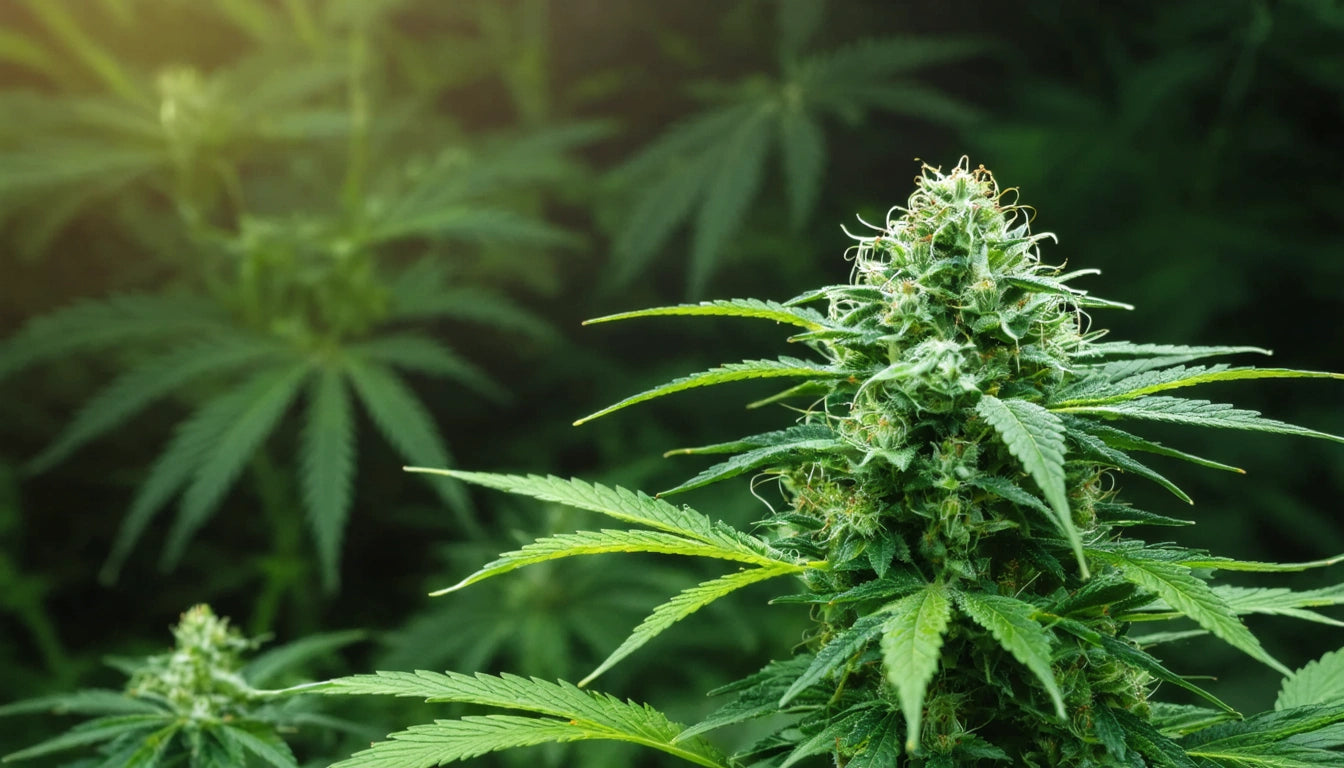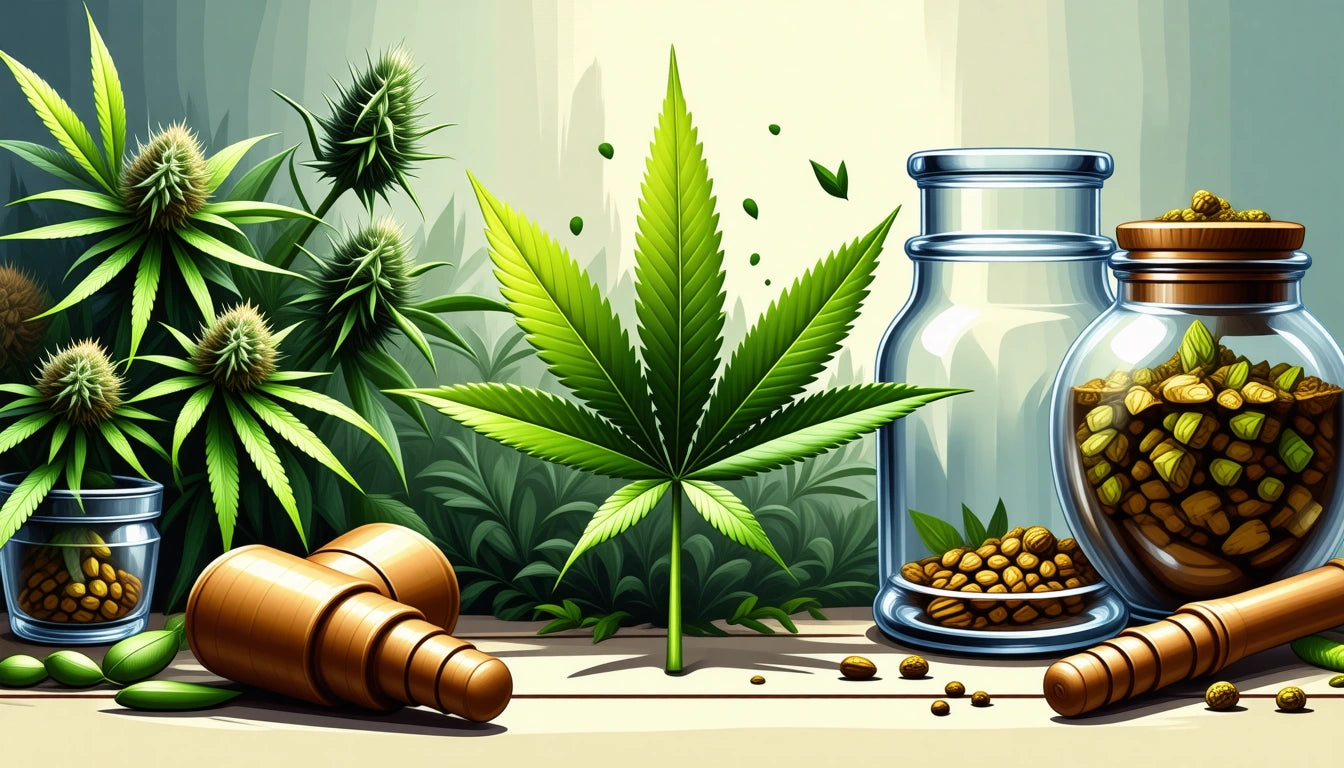Optimal pH Levels for Growing Cannabis in Soil
The pH level of your growing medium significantly impacts cannabis health, nutrient availability, and ultimately, your harvest quality. For cannabis cultivators, understanding and maintaining the best pH for cannabis plants is a fundamental skill that can make the difference between mediocre and exceptional results.
Understanding pH Importance for Cannabis Cultivation
pH is a measure of how acidic or alkaline a solution is, ranging from 0 (highly acidic) to 14 (highly alkaline). For cannabis grown in soil, the pH level directly affects the plant's ability to absorb essential nutrients. When pH levels fall outside the optimal range, nutrients become chemically bound to the soil, making them unavailable to the plant even if they're physically present.
According to research on optimizing water pH for healthy plant growth, maintaining proper pH levels can prevent up to 90% of common growing problems, including nutrient deficiencies and toxicities that often manifest as discolored leaves, stunted growth, and reduced yields.
Optimal pH Ranges for Cannabis in Soil
While cannabis can survive in a relatively wide pH range, it thrives within specific parameters. For soil-grown cannabis, the best pH level for weed generally falls between 6.0 and 7.0, with an ideal target of approximately 6.3-6.5. This slightly acidic environment optimizes the availability of major and minor nutrients.
Vegetative Stage pH Requirements
During the vegetative stage, cannabis plants prioritize nitrogen uptake for leaf and stem development. The best pH for plants in this growth phase is between 6.0 and 6.5. This slightly more acidic environment enhances nitrogen availability while still allowing access to other essential nutrients.
Flowering Stage pH Requirements
As cannabis transitions to flowering, its nutritional needs shift toward phosphorus and potassium. The best pH for flowering stage in soil is slightly higher, between 6.2 and 6.7. This adjustment facilitates better uptake of these bloom-enhancing nutrients while maintaining access to secondary minerals that support resin production and terpene development.
According to this comprehensive guide on optimal cannabis nutrients, maintaining proper pH during flowering can increase trichome production by up to 25%.
Testing pH Levels in Cannabis Soil
Regular testing is essential for maintaining optimal pH. Several methods are available:
- Digital pH Meters: The best soil pH meter for weed growing provides accurate, instant readings. These devices require calibration but offer precision within 0.1 pH units.
- pH Test Strips: An affordable option that changes color based on pH level. While less precise than digital meters, they're suitable for beginners.
- Liquid pH Test Kits: These kits use chemical indicators that change color when mixed with soil water samples.
For accurate readings, test the runoff water after watering your plants. This provides insight into the actual pH environment around the root zone rather than just the water you're applying.
Adjusting pH Levels in Cannabis Soil
When pH levels drift outside the optimal range, adjustments become necessary:
To Lower pH (Make More Acidic):
- Phosphoric acid-based pH down solutions
- Citric acid (natural option)
- Vinegar (for minor adjustments only)
To Raise pH (Make More Alkaline):
- Potassium hydroxide or potassium carbonate pH up products
- Limestone or dolomite lime (for soil amendments)
- Wood ash (organic option for slight increases)
Always make gradual adjustments, as dramatic pH shifts can stress plants. After any adjustment, wait 24 hours before retesting to allow the changes to stabilize throughout the growing medium.
When handling pH adjustment products, proper safety measures are essential. As regulatory guidelines on safe packaging indicate, potentially harmful substances should be stored in secure containers to prevent accidental exposure, especially in households with children.
Common pH Problems and Solutions
Several indicators suggest pH imbalance in cannabis cultivation:
- Yellowing leaves (chlorosis): Often indicates iron deficiency due to high pH
- Dark green leaves with burned tips: May signal nitrogen toxicity from low pH
- Purple stems: Can indicate phosphorus deficiency from pH imbalance
- Spotted or mottled leaves: Possible calcium/magnesium issues from improper pH
According to this guide on choosing the best soil for growing weed, organic soils with humic acids and beneficial microorganisms can help buffer pH fluctuations, providing more stability in the root zone.
Advanced pH Management Strategies for Experienced Growers
For cultivators seeking to perfect their craft, these advanced strategies can elevate pH management:
- Soil Buffering: Incorporate materials like peat moss, coco coir, or vermiculite to stabilize pH levels and reduce fluctuations.
- Microbial Inoculants: Beneficial bacteria and fungi can help regulate soil pH naturally while improving nutrient cycling.
- Water Pre-Treatment: Age water for 24-48 hours before pH adjustment to allow chlorine to dissipate and dissolved solids to settle.
- Automated Monitoring: Install continuous pH monitoring systems with automatic dosing for precise control in larger operations.
As explained in this resource on soil additives for cannabis, incorporating organic matter like worm castings can create a more resilient growing environment that naturally maintains optimal pH levels while enhancing microbial activity.
Mastering pH management is not just about avoiding problems but optimizing every aspect of plant development. By maintaining the best pH for pot throughout each growth stage, cultivators can maximize terpene profiles, cannabinoid production, and ultimately harvest quality that reflects their attention to these fundamental growing principles.











Leave a comment
All comments are moderated before being published.
This site is protected by hCaptcha and the hCaptcha Privacy Policy and Terms of Service apply.